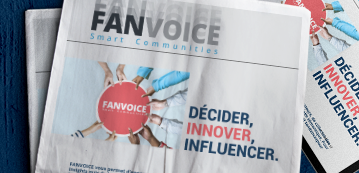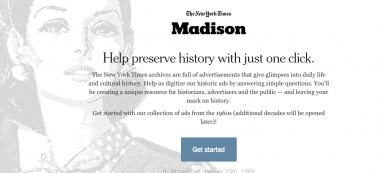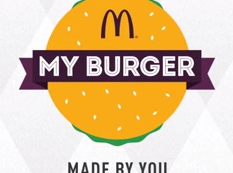The voice, the new star of qualitative and quantitative studies
 The vocal assistants, as all connected devices using the voice, are more and more used in our daily lives. To buy online, to get information, learn or check about something, to watch tv… these can all be done using the voice. So why not imagine a tool to listen to customers and to carry out surveys interconnected with these vocal assistants? The R&D team of Fanvoice has been working on the subject for several months, so let’s talk about about it.
The vocal assistants, as all connected devices using the voice, are more and more used in our daily lives. To buy online, to get information, learn or check about something, to watch tv… these can all be done using the voice. So why not imagine a tool to listen to customers and to carry out surveys interconnected with these vocal assistants? The R&D team of Fanvoice has been working on the subject for several months, so let’s talk about about it.
The vocal assistant, a multichannel and multi-sector tool
Entertainement, health, communication, the vocal assistant have afficionados in all sectors, as you can see from the examples below, which have appeared in the last few months. – BEAUTY : the new range of make-up by Lady Gaga uniquely sold through Amazon via a new voice command system. – FOOD : the instant delivery of Heineken, bier, in the Netherlands, by voice command thanks to a new service by Heineken called Drinkies created by Heinken and Google. – SPORT : a advertising campaign centered around a voice application won an award in Cannes. It was about a new model of Nike trainers sold via a voice assistant, during an NBA basketball match in february. – HEALTH : the association between the british National Health Service and Amazon to give health advice via Alexa, and to answer questions such as « how do you treat a migraine » or « What are the symptoms of the flue ?” – ENTERTAINMENT : the abitlity to access France Télévisions programs by voice command using compatible aps through google assistant. – CULTURE : the creation of a google assistant interactive game called Journey to the Moon, by the Navy recrutiing command, to celebrate the 50th anniversary of the Appollo 11 moon landing. Even if the market stills seems relatively small, the vocal market, in general, is on the increase. People naturally use the voice on a daily basis, the cultural adaptation in the interaction between man and machine by voice is more and more simple thanks to the enormous conversion launched by SIRI (who has been working on the subject since 2011) and massive democratization connected speakers that have been marketed for 2 years (Google Home, Alexa …). As long as you have something to ask or say, the voice is faster, more natural, and more intuitive. According to an article in L’Usine Digitale, a voice interface can enter 161 words per minute against 53 for the keyboard. Not bad huh? 
The voice shakes up shopping and soon brands ?
The voice seduces both consumers and marketers. With the voice assistants, appear new behaviors, new habits, as well as new ways to go shopping. According to an online study, in which Microsoft addresses 5,000 US consumers, two-thirds of respondents believe that numerical assistants will not only help them make their purchase, but will be able to guide them according to their preferences and habits. In this study, Satya Nadella, the CEO of Microsoft, emphasizes that a brand must only have its own agents, able to interact directly with customers and their personal digital assistants. In France, a recent study by the firm Roland Berger and Viseo, shows there are 20 million users of voice assistants. So there is already a huge potential for brands, commerce, marketing … and studies ! 
A conversational agent for participatory studies?
As you can see, the use of voice is reinventing the future of the customer relationship and the relationship they have to the product and the brand. Always on the lookout for new ways to listen to customers, FANVOICE is working on a new type of voice assistant: a conversational agent to administer questionnaires and collect answers. Coupled with the mobilization solutions of communities mastered by FANVOICE for 5 years, and the semantic analysis tools used by the startup since its origin, the potential is enormous. This European R & D project, called “VoxAna” (for Vox Analytics), is conducted in collaboration with the SEB Group, Telecom Italia and POLIMI the Polytechnic School of Milan. The goal of this conversational agent is to integrate voice into the customer journey, potentially over the entire product life cycle. This project now involves several hundred contributing consumers, you can also participate by joining the FANVOICE campaign designed for this purpose. The goal of the VoxAna experience and project is to understand from personal experiences, uses and feelings, what are the levers and brakes of this new customer listening channel, but also to understand the future needs and to consider the next priority developments to be carried out, based on the analysis of the feedback posted by contributors and future beta testers. Linked to a dashboard and KPIs, the VoxAna semantic analytics solution will extract information about ideation, co-creation and beta-testing campaigns powered by the Fanvoice participatory platform, to analyze the most popular features and most requested products and tested solutions, and to detect the common expectations of users. The goal, of course, is to help marketers better understand the expectations of consumers, relying on new equipment more and more prevalent in their daily lives (End 2018, “According to Médiametrie, there were 1.7 million daily users of at least one of these connected speakers: HomePod, Amazon Echo, Google Home “). Does this project interest you ? Feel free to register and participate in the campaign, or to meet us at the first “VoiceTech” show, on November 26 and 27 in Paris. Laurette Château Consumer Insights Project Manager l.chateau@alfstore.com
Rejoignez les marques connectées à leurs clients et collaborateurs
Nous sommes à votre disposition pour échanger sur notre univers des communautés








